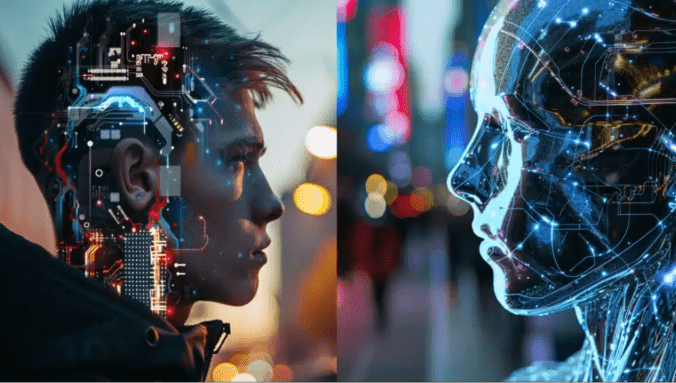Neural networks, inspired by the workings of the human brain, are fundamental to Artificial Intelligence (AI). These systems process data in a manner akin to how neurons communicate, enabling machines to perform tasks that require learning and decision-making. From voice assistants to medical diagnostics, neural networks power much of the AI technology we encounter today.
What Are Neural Networks?
Neural networks are designed to mimic the structure of biological neurons, enabling machines to learn by identifying patterns and relationships in data. They consist of interconnected nodes, or “neurons,” organized in layers. Each node processes a small piece of information and passes it to the next layer.
Layers in a Neural Network
A typical neural network comprises three types of layers:
- Input Layer: This layer receives raw data, such as numerical values, text, or images. For instance, in image recognition, each pixel value of the image is fed into the input layer.
- Hidden Layers: These layers process the input data by performing calculations, extracting features, and identifying patterns. Hidden layers are where the “learning” happens, as they adjust weights and biases based on the data.
- Output Layer: The final layer generates the prediction or result, such as identifying an image as a “cat” or “dog” or classifying an email as “spam” or “not spam.”
Activation Functions
Activation functions determine whether the output from a neuron should be passed to the next layer. They introduce non-linearity, allowing the network to handle complex relationships in data. Common activation functions include:
- ReLU (Rectified Linear Unit): Often used in deep networks, it outputs the input if positive or zero otherwise.
- Sigmoid: Outputs values between 0 and 1, making it ideal for probability-based outputs.
- Softmax: Used in multi-class classification, it converts logits into probabilities.
How Neural Networks Learn
Forward Propagation
In forward propagation, input data flows through the network layer by layer. Each neuron applies weights, biases, and an activation function to compute an output. For example, in predicting house prices, features like size, location, and age are processed to estimate a price.
Backpropagation
Backpropagation is the process of refining the network’s parameters. After the output is compared to the actual result, the error is propagated backward, updating weights and biases to minimize the difference. This iterative process is essential for improving the network’s accuracy.
Gradient Descent
Gradient descent is an optimization algorithm that adjusts the network’s parameters to minimize the loss function, which measures the difference between predictions and actual values. Variants like stochastic gradient descent (SGD) and Adam optimizer make this process faster and more efficient.
Types of Neural Networks
Feedforward Neural Networks (FNN)
Feedforward networks are the simplest form, where data flows in one direction—input to output. They are ideal for tasks like:
- Regression analysis: Predicting numerical values, such as sales forecasts.
- Classification: Categorizing inputs, like identifying spam emails.
Convolutional Neural Networks (CNN)
CNNs are designed for processing visual data, such as images and videos. They use convolutional layers to extract features like edges, textures, and shapes. Applications of CNNs include:
- Image recognition: Identifying objects in photos.
- Medical imaging: Detecting anomalies in X-rays or MRIs.
- Facial recognition: Used in security systems and photo-tagging applications.
Recurrent Neural Networks (RNN)
RNNs are specialized for sequential data, where context matters. They retain information from previous inputs, making them suitable for:
- Language modeling: Predicting the next word in a sentence.
- Time-series forecasting: Analyzing stock market trends.
- Speech recognition: Converting spoken language into text.
Generative Adversarial Networks (GAN)
GANs consist of two networks—a generator and a discriminator—that compete with each other. The generator creates fake data, while the discriminator evaluates its authenticity. GANs are widely used for:
- Creating realistic images: Generating synthetic photos.
- Deepfake technology: Manipulating videos or voices.
- Art generation: Producing AI-driven artwork.
Transformers
Transformers, such as GPT and BERT, revolutionized NLP by handling long-range dependencies in text. They are foundational to applications like chatbots, machine translation, and summarization.
Applications of Neural Networks
Healthcare
Neural networks are transforming healthcare by improving diagnostics and patient care. Examples include:
- Disease detection: Identifying tumors in medical scans with high precision.
- Personalized medicine: Predicting treatment responses based on genetic data.
- Virtual health assistants: AI-powered systems like Ada and Babylon Health provide symptom analysis and guidance.
Finance
The finance industry leverages neural networks for:
- Fraud detection: Monitoring transaction patterns for anomalies.
- Risk assessment: Predicting loan default probabilities.
- Algorithmic trading: Using neural networks to make split-second investment decisions.
Autonomous Vehicles
Self-driving cars rely on neural networks to process data from cameras, LiDAR, and sensors. Neural networks enable:
- Object detection: Identifying pedestrians, traffic signs, and other vehicles.
- Route planning: Optimizing paths for safety and efficiency.
- Real-time decision-making: Reacting to changes in the environment.
Natural Language Processing (NLP)
Neural networks have advanced NLP by enabling:
- Chatbots: Handling customer queries in e-commerce and banking.
- Translation tools: Converting text between languages with tools like Google Translate.
- Sentiment analysis: Gauging public opinion on social media.
Retail and E-commerce
Neural networks enhance customer experiences by:
- Recommending products: Personalized suggestions based on browsing history.
- Dynamic pricing: Adjusting prices in real-time based on demand.
- Visual search: Allowing users to find products by uploading images.
Challenges in Neural Networks
Overfitting
Overfitting occurs when a network performs well on training data but fails to generalize to new inputs. Solutions include:
- Dropout: Randomly disabling neurons during training to prevent reliance on specific nodes.
- Data augmentation: Expanding datasets by altering existing data.
Computational Costs
Training deep neural networks requires significant computational power, often involving GPUs or TPUs. This can make development expensive and time-consuming.
Data Requirements
Neural networks thrive on large, labeled datasets. However, acquiring and annotating data can be challenging, especially in specialized fields like medicine.
Ethical Concerns
Neural networks can inadvertently reflect biases in training data. For example, biased facial recognition systems may misidentify individuals based on ethnicity. Addressing these issues requires transparency and ethical AI practices.
The Future of Neural Networks
Quantum Neural Networks
The integration of quantum computing with neural networks promises to solve complex problems faster, potentially revolutionizing fields like cryptography and pharmaceuticals.
Neuromorphic Computing
Neuromorphic chips emulate biological neurons, making neural networks more efficient and capable of processing data in real-time.
Transfer Learning
Transfer learning allows networks to apply knowledge from one domain to another. For instance, a model trained on medical images can be fine-tuned for a related task, reducing training time.
Explainable AI (XAI)
As neural networks become more complex, explainability is critical. XAI aims to make AI decisions transparent, fostering trust and accountability.
FAQs
What are neural networks?
Neural networks are AI systems that mimic the human brain’s structure to process data, recognize patterns, and make predictions.
How do neural networks work?
Neural networks process data through layers of nodes, adjusting weights and biases during training to improve accuracy.
What are the main types of neural networks?
Common types include feedforward networks, CNNs, RNNs, GANs, and transformers.
What challenges do neural networks face?
Challenges include overfitting, high computational costs, and data biases.
Where are neural networks used?
They are used in healthcare, finance, autonomous vehicles, NLP, and e-commerce, among other fields.



